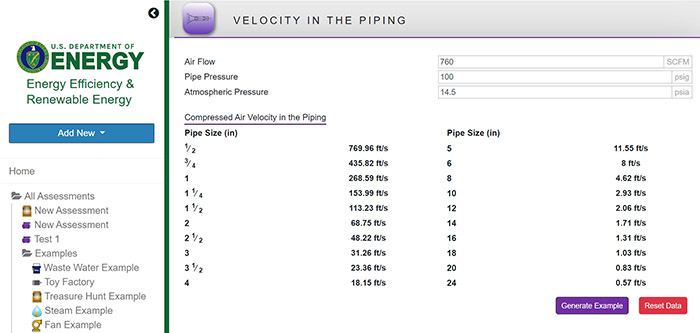How do you determine the diameter of the compressor room header pipe? Many piping installers might take a look at the outlet diameter of the air compressor and chose a similar size, but due to the variety of different outlet sizes, and the combination of flow of multiple compressors in a room this may not be the best approach.
Best practices in compressed air installation dictates that to achieve minimal pressure loss in the compressor room header you should keep the pipeline velocity within the pipe at least between 20 and 30 feet per second. If this is done, the pressure loss in the piping will be minimal — and there will be room for future growth.
But the velocity in the pipe changes with pressure, how can we calculate it? We are fortunate to find that the USDOE MEASUR tool has a handy calculator tool for us to use to verify the calculation.

For example, if we have two 50 hp 220 cfm and one 75 hp 320 cfm compressors installed in our system totaling 760 cfm at 100 psi we would use a pipe size somewhere between 3 in. and 4 in., each compressor should have a 2-in. connection to this header. This may seem surprising, but so would the calculated operating cost in extra energy the compressors consume to overcome the pressure differential.
Be sure to size your piping correctly to ensure efficient operation.
The MEASUR tool can be downloaded here: https://www.energy.gov/eere/amo/measur
Filed Under: Components Oil Coolers, Compressed Air Technologies, Pneumatic Tips